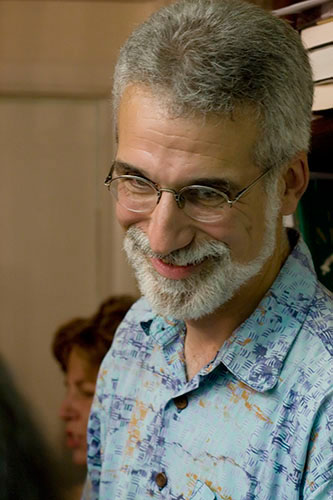Joseph Wallace appeared on The Bat Segundo Show #336. Mr. Wallace is most recently the author of Diamond Ruby.
Listen: Play in new window | Download
Condition of Mr. Segundo: Replacing his failed Atkins diet with three square squirrel meals each day.
Author: Joseph Wallace
Subjects Discussed: [List forthcoming]
EXCERPT FROM SHOW:
Correspondent: Radar guns were introduced in 1935 to measure a baseball’s speed. Before that, you had speed machines, which were increasingly rare. And as I understand it, there’s extremely little recorded information on pre-radar speed machines. In this book, Ruby looks at the machine in question, and you write, “To be honest, she couldn’t make head or tail of it.” This leads me to believe that there was some guesswork or confabulation upon your part.
Wallace: No. The only thing I didn’t know was exactly what — that’s a great question. In 1913, Baseball Magazine decided that they wanted to figure out how fast Walter Johnson and — I can’t remember, Matt. I can’t remember. Another pitcher. Walter Johnson pitched. But of course, that wasn’t so easy to do in 1913. So they went — in fact, as the book says, they went to the Remington Arms Company. And they said, “Help us out. We want to be able to do this.” The Remington Arms Company, in fact, has a device for measuring the speeds that bullets flew that was exactly the way I describe the speed machine here. Baseball Magazine — in fact, this is all completely accurate; it was one of those things that I found for a nonfiction book and loved and said, “Oh, I have to be able to use this somehow” — they ended up doing a fifteen page article that described and photographed the wire mesh that you had to throw the ball through. It was the simplest thing. You’d throw a baseball. It would brush through the mesh, which would register on the device. It would then hit a steel plate that was also wired to the device. They had the ability then to calculate the amount of time in between. And they knew the distance. And they could figure out how fast the ball was going. So they did this article. It was really, really hard for Walter Johnson, who was incredibly fast and incredibly accurate, to throw the ball through the wire mesh. So the only thing I changed from the original was that I made the mesh — the screen that Ruby and the people who are throwing the ball against her — bigger. Because if Walter Johnson had trouble getting it through, it would be really unfair to anybody other than Ruby.
It was a wonderful article. And my favorite thing about it was that, when I was researching the book, I went to the Remington Company and I said, “Tell me more.” And the Remington Company said, “We had never heard of this. We believe it exists. Here’s a historical forum where people talk about Remington’s history. Go to it.” And I went to it. And I posted. And I asked a bunch of questions about it. And people were so fascinated. And they’d seen the article. But none of them still exist. In other words, it’s a lost part of the Remington Arms Company’s history that they used to measure the speed of bullets.
Correspondent: They don’t keep very good records.
Wallace: They must not. I was very disappointed! So the answer is that it’s completely accurate. The only thing that wasn’t accurate, other than the size of the mesh, was the fact that the photographs of the machine itself don’t take you into the inner workings. So everything is accurate. Except I couldn’t describe how it worked inside. Because that wasn’t there. But I probably would not have been able to write the entire Coney Island part. This book — if there’s one article that’s the most important thing to this entire book, it’s the fact that in 1913, Baseball Magazine was smart enough. And, in fact, the same year, they decided to look into whether lengths of arms actually increased how fast you were. And there was a long article with all these shots — again, Walter Johnson, who had very long arms — standing there shirtless as they measured his wingspan versus other pitchers’ wingspans. So Baseball Magazine was this remarkably forward-thinking and clever magazine back in the 1910s.
Correspondent: Very conceptual, it sounds like.
Wallace: And extremely helpful to a writer like me! Who needed both long arms and the speed machine to make the book work.
(Image: Mary Reagan)
The Bat Segundo Show #336: Joseph Wallace (Download MP3)
